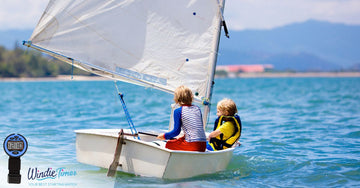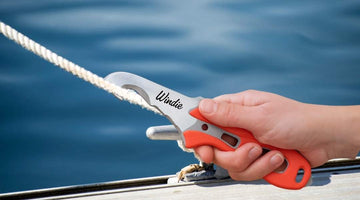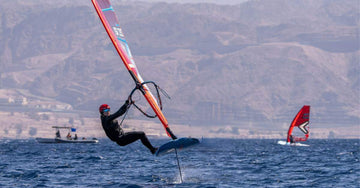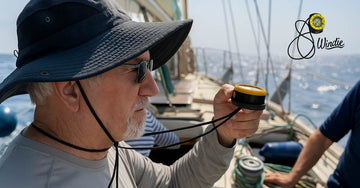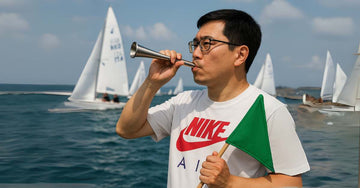Mastering the Art of Regatta: Understanding Sailing Race Sequences
Sailing races, or regattas, are thrilling and complex events that require skill, strategy, and a deep understanding of race sequences. For seasoned sailors and newcomers alike, mastering the sequences used in regattas can be the difference between crossing the finish line first or lagging behind. In this blog, we will explore the essential sequences used in sailing races, breaking down the procedures and rules that govern these exciting competitions.
Introduction to Regatta
A regatta is a series of boat races, typically held over a set period, with each race contributing to an overall score. These events can range from small local competitions to large international championships. The boats involved can vary from small dinghies to large yachts, each category having its own set of rules and sequences.
Importance of Race Sequences
Race sequences in regattas are crucial as they ensure fairness, safety, and order. They consist of a series of timed signals that guide the sailors from the pre-start phase to the start of the race. Understanding and reacting promptly to these signals is essential for a good start and overall performance.
The Start Sequence
The start of a sailing race is one of the most critical phases. A good start can set the tone for the entire race, while a poor start can be challenging to recover from. The standard start sequence typically involves a series of timed signals, usually given by flags and sound signals.
Warning Signal
The warning signal is the first signal in the start sequence, typically given five minutes before the start. This signal indicates that the race will begin soon, and it usually involves raising a specific flag (often the class flag) and sounding a horn or gun. Sailors must position themselves strategically, considering wind direction and other boats.
Preparatory Signal
The preparatory signal follows the warning signal, typically four minutes before the start. This signal involves raising a preparatory flag and sometimes a second sound signal. It signifies that sailors should be preparing for the start by positioning their boats on the starting line and making final adjustments.
One-Minute Signal
One minute before the start, a signal is given, usually by lowering the preparatory flag and sounding another horn. This is the final countdown, and sailors must be in their optimal starting position, ready to accelerate as soon as the race begins.
Start Signal
The start signal is given at the exact time the race begins, usually by lowering the class flag and sounding a horn. At this point, sailors can cross the starting line and begin the race. A clean start is crucial, as crossing the line too early can result in penalties or disqualification.
Post-Start Sequence
After the start, the race sequence continues with various maneuvers and strategies employed by the sailors. The course typically consists of several legs, marked by buoys or other navigational aids, which sailors must round in a specific order.
Upwind Leg
The first leg of most races is often upwind, requiring sailors to navigate into the wind. This leg is particularly challenging as it involves tacking, or zigzagging, to make progress. Positioning and wind reading are critical skills here.
Mark Rounding
Rounding the marks, or buoys, is another crucial part of the race sequence. Sailors must navigate around these points while maintaining speed and avoiding collisions with other boats. Efficient and smooth mark rounding can save valuable time and improve overall positioning.
Downwind Leg
The downwind leg involves sailing with the wind, often using larger sails like spinnakers to catch more wind and increase speed. This part of the race can be fast and exhilarating but also requires careful handling to avoid capsizing or losing control.
Finishing Sequence
The finishing sequence is the final part of the race, where boats cross the finish line. The finish line is typically between a buoy and a committee boat, with the finishing signal given by a flag and sound signal.
Approaching the Finish
Sailors must approach the finish line strategically, considering wind direction and the position of other boats. It's essential to maintain speed and position right up to the line.
Crossing the Line
Crossing the finish line completes the race, with each boat's time recorded by the race committee. The positions and times are used to determine the overall standings in the regatta.
Race Committee and Signals
The race committee plays a vital role in managing the race sequences. They are responsible for setting the course, starting the race, recording times, and ensuring all rules are followed. The signals used by the race committee, including flags and sound signals, are standardized to ensure clarity and consistency.
Common Signals
- Class Flag: Indicates the class of boats racing.
- Preparatory Flag: Signals the preparatory phase.
- Individual Recall: Indicates a boat crossed the start line early.
- General Recall: Indicates a problem with the start, requiring all boats to return and restart.
- Course Flags: Indicate changes or adjustments to the race course.
Understanding the Flags
Each flag has a specific meaning and is used in combination with sound signals to communicate with the sailors. Familiarity with these signals is essential for successful participation in regattas.
Strategies for Success
Understanding the sequences and signals is just one part of succeeding in a regatta. Effective strategies, including good boat handling, wind reading, and tactical positioning, are equally important. Here are some tips for success:
Pre-Race Preparation
- Study the Course: Know the layout, marks, and potential challenges.
- Weather Check: Understand the wind patterns and weather conditions.
- Boat Maintenance: Ensure your boat is in top condition.
During the Race
- Positioning: Stay in clear air and avoid congested areas.
- Communication: Maintain clear communication with your crew.
- Adaptability: Be prepared to adjust your strategy based on changing conditions.
Post-Race Review
- Analyze Performance: Review what went well and what could be improved.
- Learn from Others: Observe and learn from more experienced sailors.
- Stay Fit: Physical fitness can significantly impact performance.
Conclusion
Regattas are a blend of precision, strategy, and skill, with race sequences playing a crucial role in the outcome. By understanding and mastering these sequences, sailors can improve their performance and enjoy the thrill of competitive sailing. Whether you are a novice sailor or an experienced racer, continuous learning and practice are key to success in the dynamic world of sailing races.
Integrating the Windie-Timer Race Stopwatch
A crucial tool for any competitive sailor is the right equipment, and the Windie-Timer Race Stopwatch is a standout choice. Designed to enhance sailing performance, this stopwatch offers customizable countdowns and seamless usability, tailored specifically for sailing races. Its robust 65mm ABS case ensures durability, while the 5,4,1,0 WS start sequence feature aids in perfect race starts. This specific sequence is ideal for sailors as it breaks down the critical moments leading up to the start, allowing for precise timing and optimal positioning. Additionally, its water resistance up to 50 meters and shock-resistant construction make it reliable in various conditions. The Windie-Timer's precise timing capabilities are essential for hitting the start line perfectly and maintaining accurate race timing throughout the competition.
For more information, visit the Windie Timer product page.

